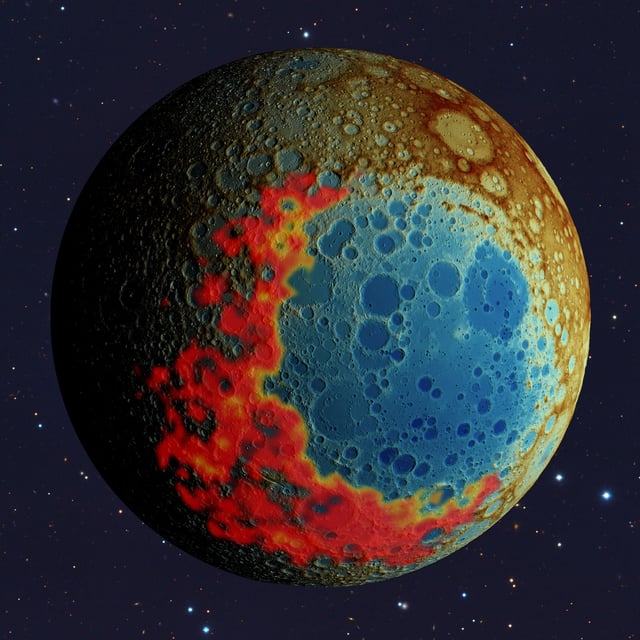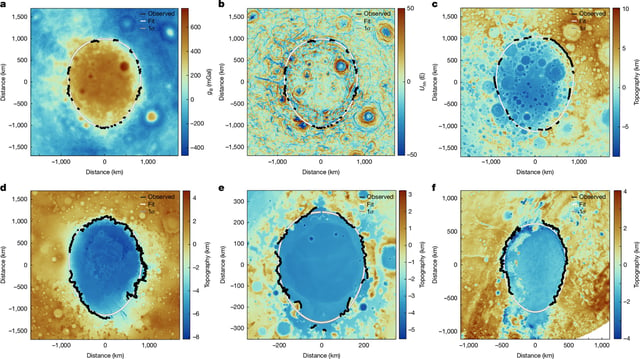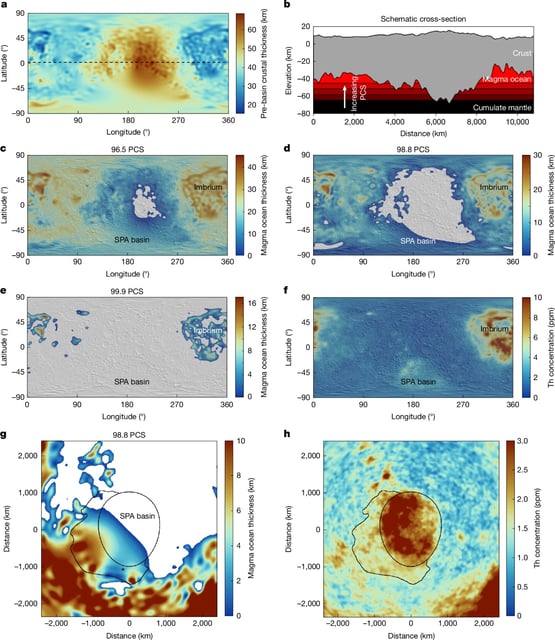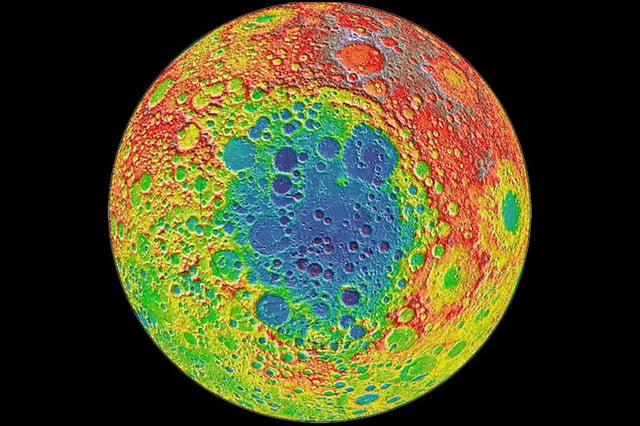Overview
- The peer-reviewed Nature paper, led by Jeffrey Andrews-Hanna of the University of Arizona, argues the South Pole–Aitken basin was carved by an impactor arriving from the north.
- Researchers traced the basin’s outline using topography, gravity and crust-thickness models and found a consistent southward taper indicative of an oblique strike.
- Comparisons with other giant basins such as Mars’s Hellas show down-range narrowing, reinforcing the inference of a north-to-south impact.
- The analysis predicts a thick pile of deep interior ejecta along the basin’s southern rim, aligning with planned Artemis landings near the lunar south pole.
- Ejecta composition appears asymmetric, with thorium- and KREEP-rich material concentrated on the western flank, though definitive tests await returned samples.



